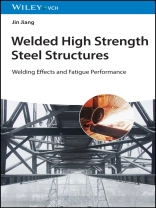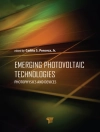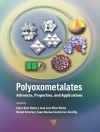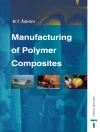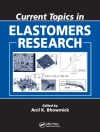Welded High Strength Steel Structures
Understand the impact of fatigue on high strength steel joints with this comprehensive overview
High strength steels are highly sought after for industrial and engineering applications ranging from armored vehicles to welded engineering components built to withstand considerable stress. The mechanical properties of welded joints made from high strength steel are integrally linked to the specific welding process, which can have an enormous impact on fatigue performance.
Welded High Strength Steel Structures: Welding Effects and Fatigue Performance provides a comprehensive analysis of high strength steel joints and the ramifications of the welding process. It guides readers through the process of performing thermal analysis of high strength steel structures and evaluate fatigue performance in the face of residual stress. The result is a volume with innumerable use cases in engineering and manufacture.
Welded High Strength Steel Structures readers will also find:
- An author with decades of experience in research and engineering
- Numerous studies of various classes of high strength steel joints
- Studies on tubular structures for welding residual stress
Welded High Strength Steel Structures is a must-own for welding specialists, materials scientists, mechanical engineers, and researchers or industry professionals in related fields.
Cuprins
List of Figures ix
List of Tables xvii
Preface xix
Notation xxi
1 Introduction 1
1.1 Research Background 1
1.2 Objectives and Scope 4
1.3 Contributions and Originality 6
1.4 Organization 7
2 Literature Review 9
2.1 High-Strength Steel 9
2.1.1 Overview 9
2.1.2 Delivery Condition of HSS 10
2.1.3 Fatigue and Fracture of HSS 11
2.1.4 Codes and Standards of HSS Application 12
2.2 Welding and Residual Stress 13
2.2.1 Overview of Arc Welding 13
2.2.2 Weldability of Steel 15
2.2.3 Phase Transformation and Other Phenomena in Welding Procedures 16
2.2.4 The Formation of Residual Stress 20
2.2.4.1 Origin and Types of Residual Stress 20
2.2.4.2 Generation of Welding Residual Stress 22
2.2.5 Residual Stress Investigation Techniques 24
2.2.5.1 Experimental Investigation 24
2.2.5.2 Numerical Modeling 26
2.2.6 Exploration on Residual Stress Effects 28
2.3 Fatigue Analysis of Tubular Joints 31
2.3.1 Classification and Parameters of Tubular Joints 31
2.3.2 Stress Analysis of Intact Tubular Joints 32
3 Experimental Investigation of Residual Stress for High-Strength Steel Plate-to-Plate Joints 37
3.1 Introduction 37
3.2 The Hole-Drilling Method and Specimen Details 38
3.2.1 The ASTM Hole-Drilling Method 38
3.2.2 Specimen Specifications 39
3.2.3 Welding Specifications 41
3.3 Residual Stress Investigation 43
3.3.1 Setup and Modification of the Hole-Drilling Guide 43
3.3.2 Strain Gauge Locations 44
3.3.3 Calibration Test for Residual Stress Measurement 45
3.3.4 Residual Stress Measurement Procedure 46
3.3.5 Cutting of Brace Plate 47
3.4 Experimental Results 47
3.4.1 Distribution of Residual Stress Along the Weld Toe 49
3.4.2 The Effects of Preheating 49
3.4.3 The Effects of Joint Angle 50
3.4.4 The Effects of Plate Thickness 51
3.4.5 The Effects of Brace Plate Cutting 52
3.5 Static Tensile Testing 54
3.5.1 Testing Rig 54
3.5.2 Strain Gauge Locations 54
3.5.3 Testing Procedure 54
3.5.4 Testing Results 56
3.6 The Influence of Residual Stress on SCF Value 57
3.6.1 Analysis Method 57
3.6.2 Results and Conclusions 58
3.7 Conclusion and Summary 60
4 Numerical Study of Residual Stress for High-Strength Steel Plate-to-Plate Joints 63
4.1 Introduction 63
4.2 Modeling Procedure and Results for 2D Models 64
4.2.1 Overview 64
4.2.2 Lumped Technique 64
4.2.3 Weld Filler Addition Technique 67
4.2.4 Heat Transfer Analysis 68
4.2.5 Mechanical Analysis 70
4.2.6 Model Validation and Results 71
4.2.6.1 Model Validation 71
4.2.6.2 Numerical Modeling Results 72
4.3 Modelling Procedure and Results for 3D Models 76
4.3.1 Overview 76
4.3.2 Heat Source Model in 3D Analysis 77
4.3.3 Modeling for the Weld Filler Adding Process 78
4.3.4 Modeling Validation 80
4.3.5 Modeling Results 81
4.3.5.1 Ambient Temperature Joint 81
4.3.5.2 Preheating Joint 83
4.3.5.3 Comparison Between Ambient Temperature and Preheated Joints 84
4.4 Parametric Study 87
4.4.1 Effect of Boundary Condition 91
4.4.2 Effect of Preheating Temperature 91
4.4.3 Effect of Using Different Lumps 93
4.4.4 Effect of Welding Speed 94
4.4.5 Effect of Welding Sequence 95
4.5 Conclusions 96
5 Experimental Investigation of Residual Stress for Welded Box High-Strength Steel T-Joints 99
5.1 Introduction 99
5.2 Experimental Investigation 100
5.2.1 Material Properties 100
5.2.2 Specimen Fabrication 101
5.2.2.1 Overview of the Welding Design 101
5.2.2.2 Fabrication of Box Sections 104
5.2.2.3 Fabrication of Joint Intersection 104
5.2.3 Residual Stress Test Setup and Procedure 105
5.2.4 Strain Gauge Schemes for Residual Stress Measurement 106
5.2.5 Computation of Residual Stress 107
5.3 Testing Results 109
5.3.1 Preheated Specimen 109
5.3.2 Ambient Temperature Specimen 114
5.4 Analyses and Discussion 118
5.4.1 Preheating Effect 118
5.4.2 Chord Edge Effect 120
5.4.3 Corner Effect 120
5.4.4 Stress Variation in Depths 121
5.5 Conclusions 123
6 Numerical Study of Residual Stress for Welded High-Strength Steel Box T/Y-Joints 125
6.1 Introduction 125
6.2 Modeling Procedure 126
6.2.1 Overview 126
6.2.2 Heat Source Modeling 129
6.2.3 Thermal Interactions 129
6.2.4 Arc Touch Movement 130
6.2.5 Modeling Summary 130
6.3 Modeling of Pure Heat Transfer 132
6.4 Fully Coupled Residual Stress Analysis 136
6.4.1 Modeling Validation 136
6.4.2 Modeling Results 137
6.4.2.1 Temperature History 137
6.4.2.2 Residual Stress 138
6.5 Parametric Study 141
6.5.1 Range of the Modeling 141
6.5.2 Variation of the Residual Stress with Respect to Joint Angle 142
6.5.2.1 Variation of the Residual Stress with Respect to Joint Angle and Welding Starting Location 142
6.5.2.2 Variation of the Residual Stress with Respect to Joint Angle and Preheating Temperature 143
6.5.3 Variation of the Residual Stress with Respect to b/c (Ratio of Brace Width to Chord Width) 145
6.5.3.1 Variation of the Residual Stress with b/c and Preheating Temperature 145
6.5.3.2 Variation of the Residual Stress with b/c and Welding Starting Location 146
6.5.4 Variation of the Residual Stress with Respect to Welding Speed 147
6.5.4.1 Variation of the Residual Stress with Welding Speed and Preheating Temperature 147
6.5.4.2 Variation of the Residual Stress with Welding Speed and b/c 148
6.6 Conclusions 149
7 Stress Concentration Factor of Welded Box High-Strength Steel T-Joint 153
7.1 Introduction 153
7.2 Test Setup and Specimens 154
7.3 Strain Gauge Schemes 156
7.4 Test Procedure 158
7.5 Test Results 159
7.6 Comparision of Test Results with CIDECT Guide 161
7.7 Effect of Residual Stress on SCF 162
7.8 Conclusion 163
8 Conclusion and Recommendation 165
8.1 Introduction 165
8.2 Conclusions 166
8.2.1 Experimental Studies 166
8.2.2 Numerical Modeling 167
8.3 Recommendations for Future Research Work 168
Summary 169
Appendix 1 171
Appendix 2 175
Appendix 3 181
References 195
Index 201
Despre autor
Jin Jiang, Ph D, is Professor in Department of Civil and Environmental Engineering, Shantou University, China, Senior Researcher of Civil Engineering at Nanyang Technological University, Singapore and Associate Director of the Complex Steel Structure Research Center, Guangdong Province, China. He is also a technical assessor with the Singapore Accreditation Council (SAC) and a member of the American Society of Civil Engineers (ASCE), and has previously served as a researcher engineer at the Keppel Offshore and Marine Technology Center.
